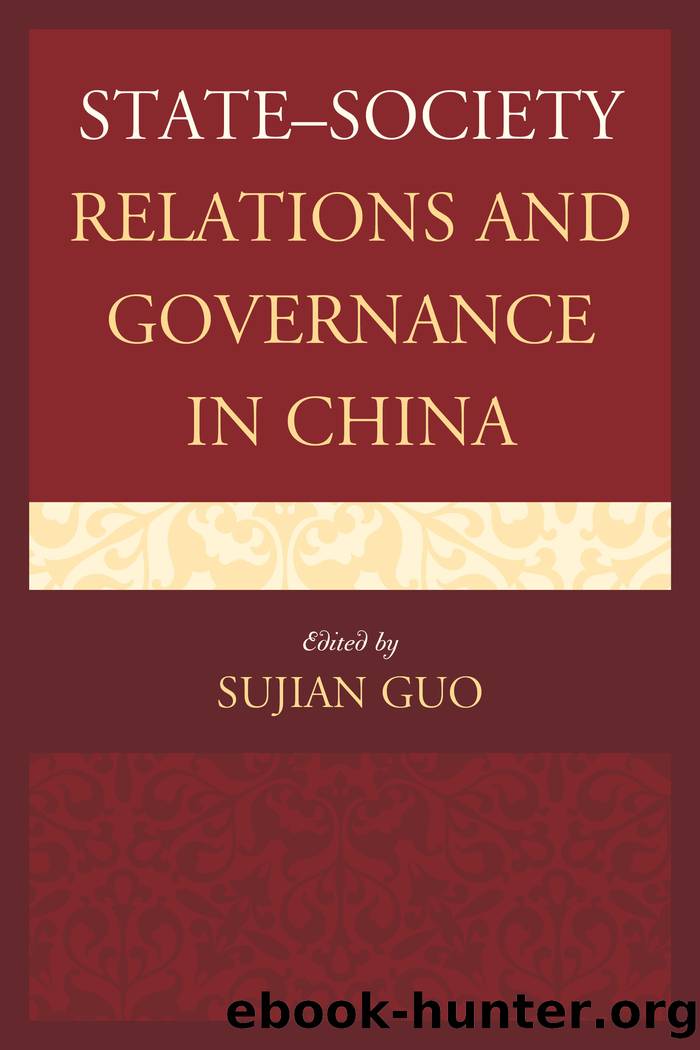StateâSociety Relations and Governance in China by unknow

Author:unknow
Language: eng
Format: epub
Tags: undefined
Publisher: Lexington Books
Published: 2012-08-15T00:00:00+00:00
A. Bureaucracy
There is widespread consensus that central bureaucracies with merit-based recruitment and promotion are critical for good governance. They are at once an expression of state capacity and a means for delivering public goods in a fair and equitable manner. As Dani Rodrick has put it, âthe quality of institutions is keyâ for economic growth.[7]
Having said that, it is not altogether clear where such bureaucracies come from. It cannot be assumed that they are created as they are needed; on the contrary, many an economy has stalled in part because bureaucratic rationalization has not taken place. Douglass Northâs argument about the importance of institutions applies here. Institutions set the ârules of the game,â and some institutional arrangements are compatible with, and encourage, the development of rational bureaucracies, and others do not.[8] But the causality seems to be the reverse of what North suggests, that is, that bureaucratic rationality stems from factors other than economic development or even the expansion of market forces, though both may well be restricted if bureaucratic rationality does not occur.
Although political scientists clearly recognize the importance of bureaucracy, there has been surprisingly little attention to when and why they are created. Perhaps the oldest thesis is that advanced by Charles Tilly. His argument is that competition between European nationsâspecifically military competitionâled nations to develop more effective bureaucracies. His logic is that military expenses led states to develop more efficient means of collecting taxes, and the need to collect taxes led to the creation of more effective bureaucracies. His famous aphorism summing this up is, âStates make wars, and wars make states.â[9]
This argument has been altered and extended by Doner, Ritchie, and Slater. Looking at Northeast and Southeast Asian states, they conclude that âsystemic vulnerability,â which they define as the high probability of domestic unrest, the threat of external invasion, and the hard budget constraint created by the difficulty of raising revenues, led states such as Taiwan, Singapore, and South Korea to create developmental states with strong bureaucracies. In contrast, the lack of such threats in Malaysia, the Philippines, Thailand, and Indonesia led to more personalistic, less bureaucratic governments. The difference in economic performance has been notable.[10]
The Doner, Ritchie, Slater argument puts an emphasis on circumstances facing states and gives short shift to history. Atul Kohli, on the other hand, thinks history is critical in understanding state and economic development in late developing states, particularly those that experienced colonization. He argues that Japanâs thorough and brutal reorganization of the Korean state and society, especially its building of a bureaucratic apparatus that could penetrate to the village level, laid the basis for Korean economic development in the post-war years. Although Kohli does not address Taiwanâs experience, much the same case could be made. Such instances of the legacy of the colonial state in the creation of the developmental state contrast with the much lighter hand the British exercised in India and the even more anemic effort they exerted in Nigeria. The circumstances a state faces no doubt influence
Download
This site does not store any files on its server. We only index and link to content provided by other sites. Please contact the content providers to delete copyright contents if any and email us, we'll remove relevant links or contents immediately.
What's Done in Darkness by Kayla Perrin(26789)
The Ultimate Python Exercise Book: 700 Practical Exercises for Beginners with Quiz Questions by Copy(20641)
De Souza H. Master the Age of Artificial Intelligences. The Basic Guide...2024 by Unknown(20431)
D:\Jan\FTP\HOL\Work\Alien Breed - Tower Assault CD32 Alien Breed II - The Horror Continues Manual 1.jpg by PDFCreator(20413)
The Fifty Shades Trilogy & Grey by E L James(19263)
Shot Through the Heart: DI Grace Fisher 2 by Isabelle Grey(19237)
Shot Through the Heart by Mercy Celeste(19102)
Wolf & Parchment: New Theory Spice & Wolf, Vol. 10 by Isuna Hasekura and Jyuu Ayakura(17273)
Python GUI Applications using PyQt5 : The hands-on guide to build apps with Python by Verdugo Leire(17216)
Peren F. Statistics for Business and Economics...Essential Formulas 3ed 2025 by Unknown(17058)
Wolf & Parchment: New Theory Spice & Wolf, Vol. 03 by Isuna Hasekura and Jyuu Ayakura & Jyuu Ayakura(16977)
Wolf & Parchment: New Theory Spice & Wolf, Vol. 01 by Isuna Hasekura and Jyuu Ayakura & Jyuu Ayakura(16603)
The Subtle Art of Not Giving a F*ck by Mark Manson(14577)
The 3rd Cycle of the Betrayed Series Collection: Extremely Controversial Historical Thrillers (Betrayed Series Boxed set) by McCray Carolyn(14297)
Stepbrother Stories 2 - 21 Taboo Story Collection (Brother Sister Stepbrother Stepsister Taboo Pseudo Incest Family Virgin Creampie Pregnant Forced Pregnancy Breeding) by Roxi Harding(13947)
Scorched Earth by Nick Kyme(12937)
Drei Generationen auf dem Jakobsweg by Stein Pia(11130)
Suna by Ziefle Pia(11054)
Scythe by Neal Shusterman(10527)
